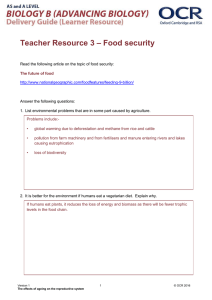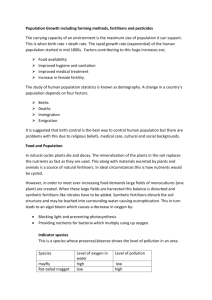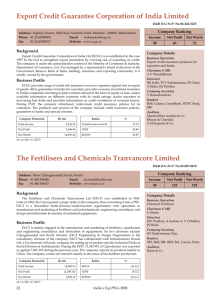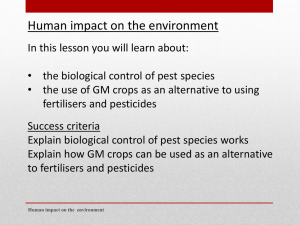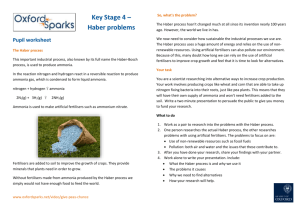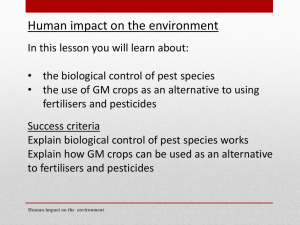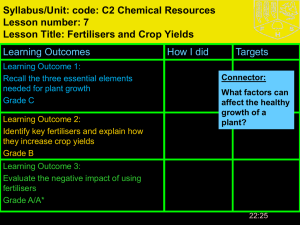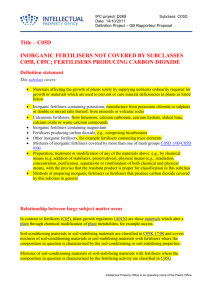File - Prestwick Academy
advertisement
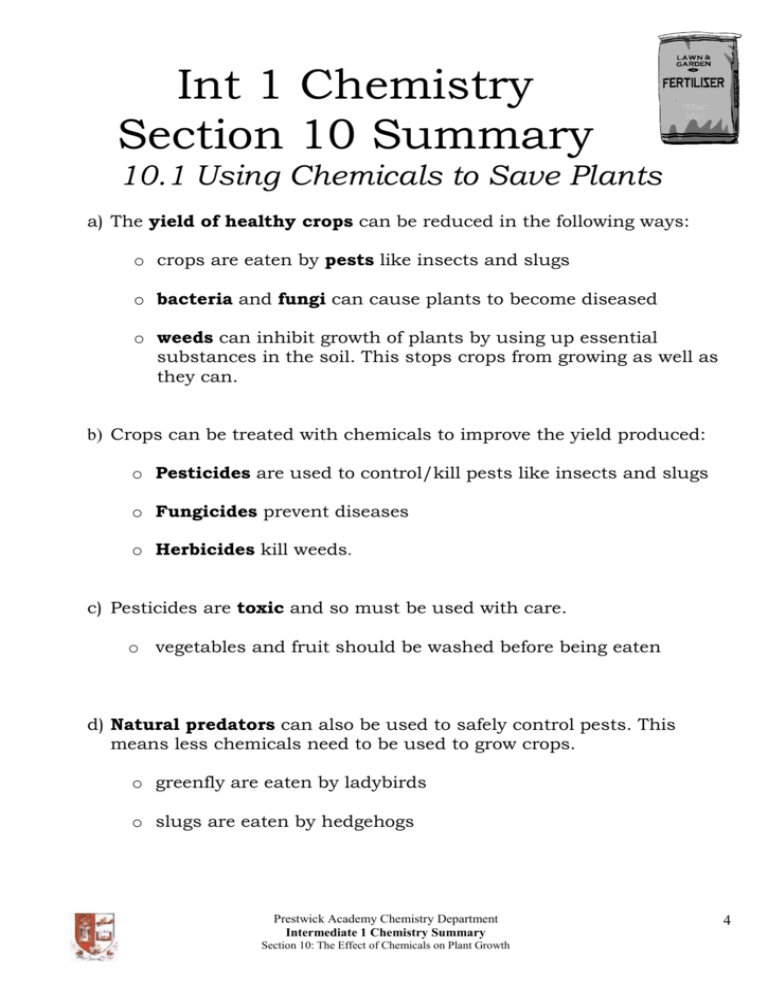
Int 1 Chemistry Section 10 Summary 10.1 Using Chemicals to Save Plants a) The yield of healthy crops can be reduced in the following ways: o crops are eaten by pests like insects and slugs o bacteria and fungi can cause plants to become diseased o weeds can inhibit growth of plants by using up essential substances in the soil. This stops crops from growing as well as they can. b) Crops can be treated with chemicals to improve the yield produced: o Pesticides are used to control/kill pests like insects and slugs o Fungicides prevent diseases o Herbicides kill weeds. c) Pesticides are toxic and so must be used with care. o vegetables and fruit should be washed before being eaten d) Natural predators can also be used to safely control pests. This means less chemicals need to be used to grow crops. o greenfly are eaten by ladybirds o slugs are eaten by hedgehogs Prestwick Academy Chemistry Department Intermediate 1 Chemistry Summary Section 10: The Effect of Chemicals on Plant Growth 4 10.2 Fertilisers a) Essential elements for healthy plant growth are: o nitrogen o phosphorus o potassium b) Plants absorb the elements Nitrogen, Phosphorus and Potassium o taken in through the roots o elements are in the form of soluble compounds c) In areas of natural vegetation, decay of vegetable and animal remains returns all essential elements to the soil. o in woodlands leaves fall to ground are return essential elements back to soil. o harvesting of crops prevents the natural return of essential elements to the soil. d) Fertilisers are added to the soil to restore essential elements. o fertilisers must contain nitrogen, phosphorus or potassium e) Examples of natural fertilisers are: o compost o manure o dung o slurry f) Use o o o of artificial fertilisers has increased because there is increased demand for food more people to feed on the planet not enough natural fertilizer g) Artificial fertilisers are made by the chemical industry o The major artificial fertilisers are compounds of ammonium, potassium, nitrates and phosphates. o fertilisers must be soluble in water to be effective h) The extensive use of nitrate fertilisers may have increased the levels of nitrate in rivers, lochs and the public water supply o the presence of large quantities of nitrates can leave the water lifeless. i) Some plants such as clover, beans and peas have root nodules where nitrogen from air is converted into nitrate compounds and absorbed. Prestwick Academy Chemistry Department Intermediate 1 Chemistry Summary Section 10: The Effect of Chemicals on Plant Growth 5
